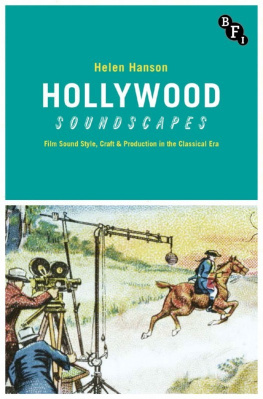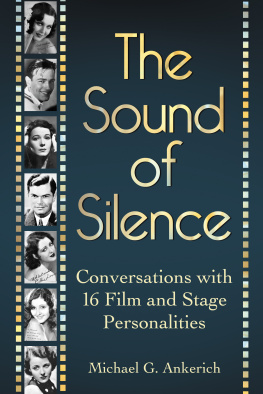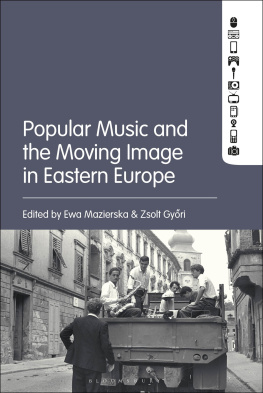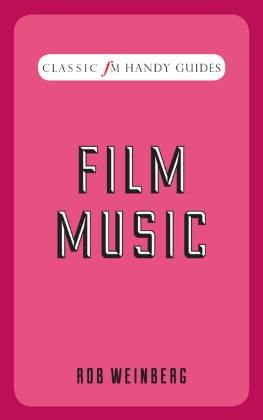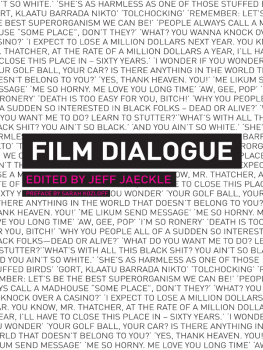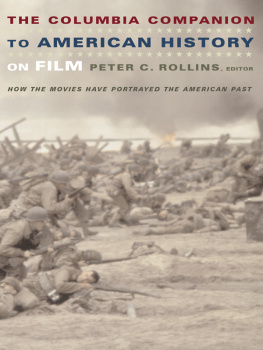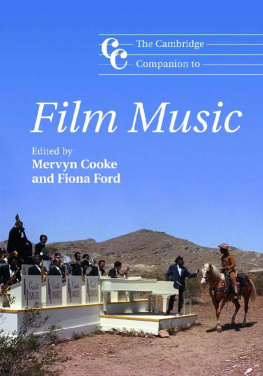AFTER THE SILENTS
FILM AND CULTURE
JOHN BELTON, EDITOR
FILM AND CULTURE
A series of Columbia University Press
EDITED BY JOHN BELTON
For the list of titles in this series see .
AFTER THE SILENTS
Hollywood Film Music
in the
Early Sound Era, 19261934
MICHAEL SLOWIK
COLUMBIA UNIVERSITY PRESS NEW YORK
COLUMBIA UNIVERSITY PRESS
Publishers Since 1893
NEW YORK CHICHESTER, WEST SUSSEX
cup.columbia.edu
Copyright 2014 Columbia University Press
All rights reserved
E-ISBN 978-0-231-53550-2
This publication has been supported by AMS 75 PAYS Endowment of the American Musicological Society, funded in part by the National Endowment for the Humanities and the Andrew W. Mellon Foundation.
Library of Congress Cataloging-in-Publication Data
Slowik, Michael.
After the silents : Hollywood film music in the early sound era, 19261934 / Michael Slowik.
pages cm.(Film and culture)
Includes bibliographical references and index.
ISBN 978-0-231-16582-2 (cloth : alk. paper)ISBN 978-0-231-16583-9 (pbk. : alk. paper) ISBN 978-0-231-53550-2 (ebook)
1. Motion picture musicUnited StatesHistory and criticism. I. Title.
ML2075.S63 2014
781.542097309042dc23
2014009771
A Columbia University Press E-book.
CUP would be pleased to hear about your reading experience with this e-book at .
Jacket image: Love Me Tender (1932) Paramount Pictures/Photofest
References to websites (URLs) were accurate at the time of writing. Neither the author nor Columbia University Press is responsible for URLs that may have expired or changed since the manuscript was prepared.
To my parents, for a lifetime of love and support, and To my wife, Amythe Nora to my Nick
CONTENTS
I OWE SPECIAL THANKS TO A NUMBER OF PEOPLE WHO HAVE assisted with this project. First, I must acknowledge my wonderful thesis committee at the University of Iowa. Corey Creekmur suggested useful ways to approach the topic, helped me obtain key film resources, and provided a particularly penetrating response to an early draft. Kim Marra raised important questions and offered a careful reading of the theater-related sections of the book. In the University of Iowas School of Music, Bob Cook carefully read the early chapters, alerted me to new music sources, and offered numerous suggestions for sharpening my musical analysis. Happily, midway through this project the University of Iowa hired film music specialist Nathan Platte, and this project has benefited immensely from his expertise, insights, and probing questions.
My biggest debt at Iowa, however, is to Rick Altman, who went beyond the call of duty for me even before I arrived at the university. He remained the model of a generous and dedicated adviser, lending me sheet music and videos and eventually giving me an enormous collection of film sound material; reading drafts of my articles; responding promptly to my inquiries; providing rapid yet thorough responses to every chapter; and connecting me with key scholars. His film sound courses and penetrating scholarship were major catalysts for this project, and I benefited tremendously from his commitment to it.
Many other individuals have been involved with this project at various stages and deserve acknowledgment here. My thanks to Steve Choe for offering several key ideas for framing the project, Nicole Biamonte for providing encouragement and advice during the early stages, David Mayer for offering helpful suggestions, and Michael Pisani for taking time out of his busy schedule to assist me with the complex topic of musical accompaniment in theatrical melodrama. I presented parts of this project in many diff erent places and contexts. For their helpful and encouraging responses I especially thank Andrew Ritchey, Kyle Stine, Jeff Smith, and my wonderful colleagues at San Diego State University: Greg Durbin, Mark Freeman, D. J. Hopkins, Paula Kalustian, and Martha Lauzen. I also wish to thank Katherine Spring for inviting me to present on a terrific panel on early sound film music at the 2013 Society for Cinema and Media Studies Conference.
I wrote much of this book while I was on a Ballard Seashore Dissertation Completion Fellowship, and I wish to thank the University of Iowa Graduate College for providing this fellowship. I am also grateful to San Diego State University for awarding me money through the University Grants Program to help offset the cost of illustrations and indexing. On my research trips to Los Angeles, Jeannie Pool of Paramount Pictures not only provided a wealth of valuable resources but also helped with the logistics of the trip and even gave a private tour of the Paramount Pictures lot. At the Warner Bros. Archives at the University of Southern California, Jonathon Auxier and Sandra Joy Lee Aguilar responded promptly to my numerous inquiries and helped set up two productive research visits. My thanks also to Shannon Fife and the legal staff at Warner Bros. for their quick responses to my inquires and for permitting me to use photographs from the Warner Bros. Archives. I received valuable assistance from staff members at Special Collections in the Charles E. Young Research Library at UCLA and the UCLA Film & Television Archive. Thanks also go to Quentin Ring and McKenzie Sweeney, who provided generous hospitality in Los Angeles. On a research trip to the Wisconsin Center for Film and Theater Research, Dorinda Hartmann cheerfully assisted me in a week of film viewing.
I wrote most of the first draft of this book on the campus of Western Kentucky University. I owe enormous thanks to Ken Foushee and Selina Langford of the universitys interlibrary loan program for accommodating a continuous onslaught of requests over the course of two years. Without their help this book literally could not have been written. I also thank the Western Kentucky University library personnel for their willingness to order crucial materials for my project.
Special thanks go to John Belton, Jennifer Crewe, and Kathryn Schell at Columbia University Press for their interest in this project and for bringing it to print. I also thank Joe Abbott for his extremely helpful copyediting, and Roy Thomas for his valuable assistance during the books production phase. Portions of appear in Experiments in Early Sound Film Music: Strategies and Rerecording, 19281930, American Music 31, no. 4 (2013). I am grateful to editors Will Brooker at Cinema Journal and Neil Lerner at American Music for their invaluable editorial guidance.
I wish to thank my parents, John and Lynn, and my brother, Jay, who have encouraged me since the day I decided to pursue this career. Their interest in this project, along with their love and moral support, has helped keep me energized and motivated. Finally, I am indebted, in ways words cannot quite express, to my wife, Amy, who on my behalf endured six years of poverty, months of subzero temperatures, moves to four different states, and endless movie screenings. She has remained a champion, editing all of my writing, offering continual encouragement, sharing her office space, and loving me throughout the process.
IN THE GROWING LITERATURE ON FILM SOUND, NO TOPIC HAS enjoyed more attention than film music. As film scholarship expanded in the 1970s, several writers, recognizing film music to be a crucial means for conveying affect and guiding interpretation, explored the works of outstanding film music composers and offered preliminary histories of film music.
Given the voluminous literature on film music, the lack of information on the film score in the early sound era is nothing short of remarkable. A fair amount has been written about the history of film music in the silent era (roughly 1895 to 1927), including its influences from prior media and its typical practices in nickelodeons and movie palaces. Yet film music scholars have almost uniformly written off film music in the early sound era (1926 to 1932). Believing the use of nondiegetic music (music without a source in the image) in the early sound era to be minimal, scholars have posited a striking narrative in which


